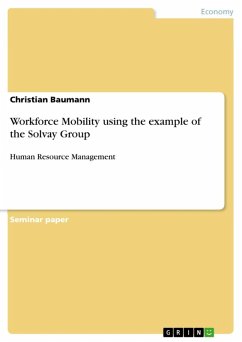Research Paper (undergraduate) from the year 2005 in the subject Leadership and Human Resource Management - Miscellaneous, grade: 1,3, University of Applied Management, course: Durchführung eines konstruktivistischen Kommunikations- und Verhaltenstrainings, language: English, abstract: The size of a group is a topic with which we each day is unconsciously occupied. If we rise e.g. after a long working day into the overcrowded bus home, then is fast conscious to us: the group is too large. If we cannot master our tasks on the job punctually, we wish ourselves reinforcement. Everyone is each day in a multiplicity of groups: Family, friends, teammate etc. nevertheless: Does it really concern thereby groups? With this question I would like to deal in chapter 2 more in greater detail. There one describes, by which components a group is characterized. Thereupon become in the 3. chapter different group sizes formally and during the process more exactly regarded. All these scenarios suggests that the group has emergent properties which go beyond the individuals who comprise it. Starting from chapter 4 I will be occupied further with the work with smaller groups. The data resulting from it can be used then likewise for the work with larger group - by the organization by sub-groups. At first we will regard, how to use small groups to promote interaction within the class as a whole. This chapter should be an assistance for understanding group phenomena and group processes. Beyond that suggestions given for the line of the group. Finally the also following phenomena are supplemented: how to use groups to syndicate discussions of questions or cases and how to use groups for substential project work. In the last chapter I give a summary and a view to the treated topic.
Dieser Download kann aus rechtlichen Gründen nur mit Rechnungsadresse in A, B, BG, CY, CZ, D, DK, EW, E, FIN, F, GR, HR, H, IRL, I, LT, L, LR, M, NL, PL, P, R, S, SLO, SK ausgeliefert werden.









